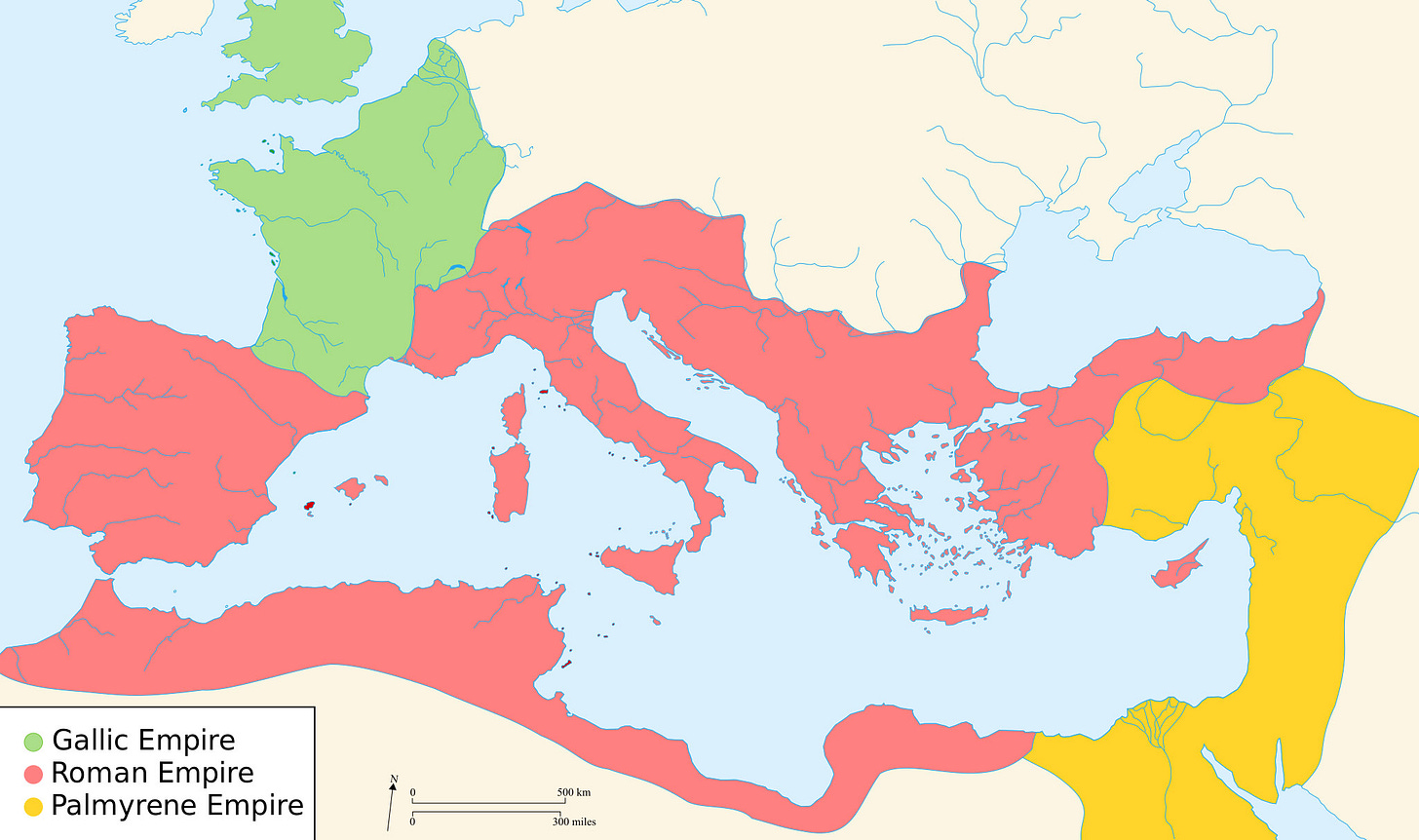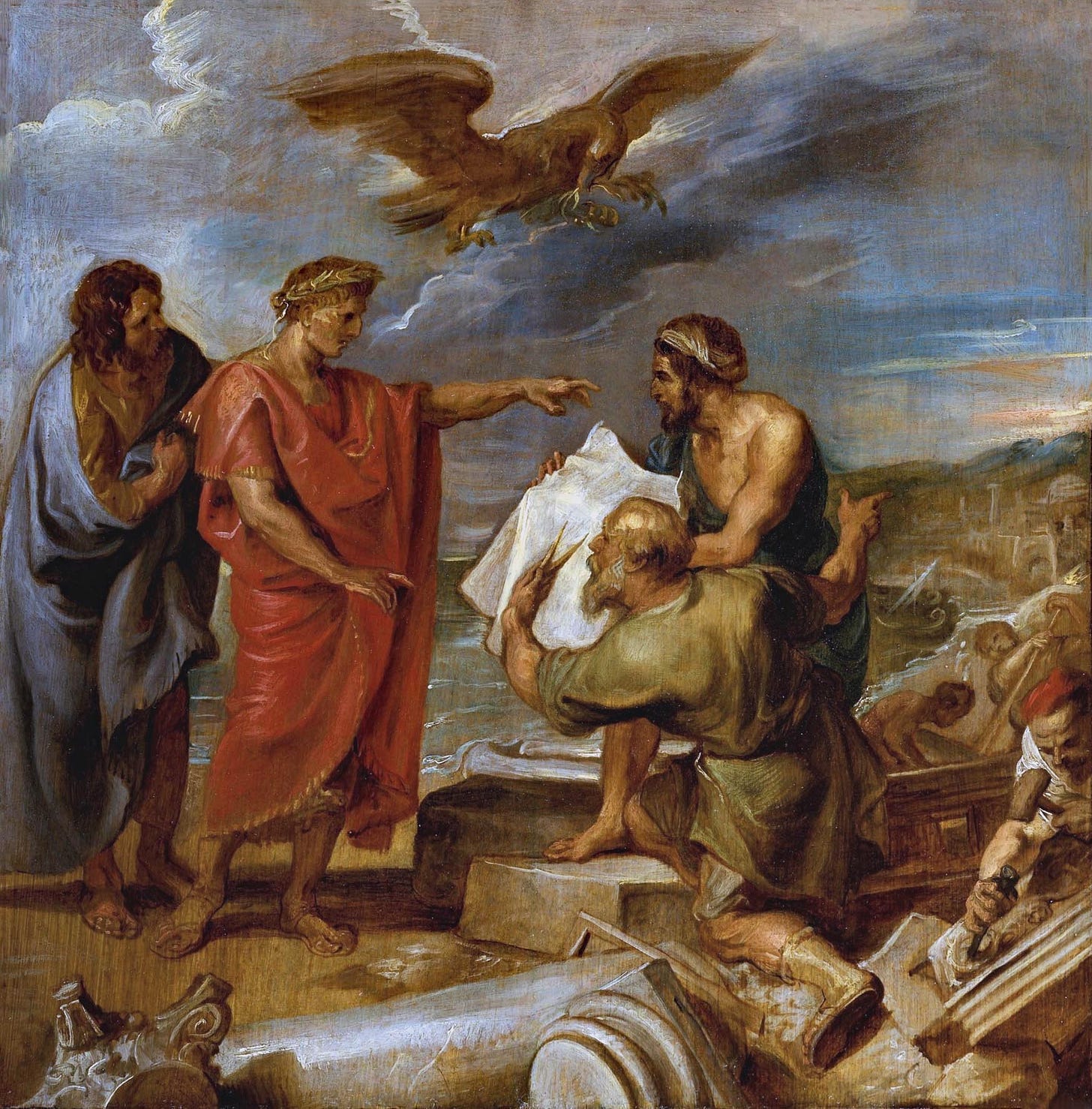Constantinople & The Birth of a Christian Empire
How Emperor Constantine the Great founded the only city in the world to ever rival Rome herself, the seat of a Christian empire...
At the height of the Roman Empire, the dominion of the Caesars spanned no less than three continents. The notion of its collapse was not only inconceivable, but positively ludicrous.
Equally absurd was the thought that any other city might rival — much less surpass — the glory and grandeur of the Eternal City herself. Yet for one man, vision eclipsed presumption, and the city he founded did precisely that.
1,695 years ago last Sunday, on the 11th May AD 330, Emperor Constantine the Great inaugurated the city of Constantinople on the Bosphorus Strait. The New Rome, as the city was conceived, would shine as a beacon through the ruin of the West, and swell into the mightiest bastion of Christendom on Earth.
But while the significance of Constantinople might seem obvious to us today, contemporary Romans had every reason to presume the attempted founding of a ‘new’ Rome would fail.
That is why today, we tell the story of how Constantine saw and created opportunities where no one else did — and how, in doing so, he paved the way for a new capital of a Christian Empire…
The Divided Roman Empire

The achievements of Constantine are all the greater when one considers the catastrophic state of the Roman world into which he was born, which was not for nothing called the ‘Crisis of the Third Century’.
For with the assassination of the Emperor Severus Alexander in AD 235, Rome’s failure to codify the imperial succession — a failure which prevented the de facto dictatorship from ever maturing into a stable monarchy — finally came to a head. Rome, on paper, remained a republic, but when the generals of the Empire realised that the support of the army was the only thing that mattered in the pursuit of power, the Eternal City was plunged into precisely the same situation which had been the death of the Roman Republic three centuries earlier.
Laws fell silent before the rule of the sword, and for forty nine years the Roman Empire exhausted a critical mass of her treasure and manpower on relentless civil wars. Claimants arose across the known world, making a bid for power for themselves, or thrust unwillingly into the fray by powerful backers, only to be slain before the next inevitable usurpation.
By AD 271, the situation was so critical that the entire Empire fractured into three, as Gaul and Palmyra broke away. Only the valour and military genius of the Emperor Aurelian averted total imperial collapse.
In response, in AD 284 the Emperor Diocletian sought to steady the ship of state by casting aside the pretensions of old and reshaping the figure of the Emperor into a less timid and more overtly monarchic autocracy. For a time, it worked, until his territorial division of the Empire into a Tetrarchy (Rule of Four) and abdication in AD 305 pulled the rug out from under the system once more.
Fortunately for Rome, however, where Diocletian had been a Caesar, in Constantine the Empire would have a new Augustus — an ambitious, yet pragmatic, visionary who aspired not only to stabilize Rome, but to reshape her into something glorious.
A Christian Empire
Following the death of his father Constantius Chlorus in AD 306, Constantine was hailed emperor by the armies at Eboracum (today the British city of York), and was for a time content to remain in the northwestern reaches of the Empire allotted to him by the Diocletanic Tetrarchy.
When it became clear, however, that the other Augusti and Caesars did not share Diocletian’s idealism, and the Empire was once again plunged into war, in AD 312 Constantine marched south to Rome, and into the pages of history.
Yet outside the walls of the Eternal City, as he arrayed his forces before the Milvian Bridge to face Maxentius, the usurper of Italy and Africa, a great epiphany struck Constantine. For in the sky he beheld the apparition that would change him, and all the world:
“About noon, when the day was already beginning to decline, he saw with his own eyes the trophy of a cross of light in the heavens, above the sun, and bearing the inscription, IN HOC SIGNO VINCES (‘By This Sign Thou Shalt Conquer’). At this sight he himself was struck with amazement, and his whole army also, which followed him on this expedition, and witnessed the miracle..”
Eusebius, Vita Constantini I.28
The calling of Constantine, which would be felt by near all emperors to come, ensured Rome would never be the same again. In a second vision that very night, the Christian God commanded Constantine to craft a likeness of that Cross he had seen in the skies, and fly it upon the banners of his armies. Thus the base power struggles of the old Caesars were at once cast aside, and in their place had emerged the first true ‘crusade’.
Vanquishing Maxentius under the sign of the Cross, Constantine reclaimed the Eternal City. One year later, by the Edict of Milan that he co-signed with the eastern Emperor Licinius, the persecution of the Christians at last came to an end in the West.
Yet while Constantine, moved by his profound vision, was in his heart turning from paganism, Licinius in the East remained committed to the Roman gods. War was inevitable. In AD 324, Constantine’s son Crispus led the imperial navy to victory at the Hellespont, cutting off Licinius’ forces. Shortly after, Constantine crushed Licinius at Chrysopolis, securing his position as sole emperor.
His faith steadied by yet another victory, Constantine now marvelled at the setting of his triumph: the waterway where Europe and Asia meet. It was there and then that he began to develop a vision.
But however grand his vision for the city might have been, reality would soon dwarf all expectations. Constantinople wasn’t merely fated to grow rich — it was destined to flourish as the seat of a new Christian Empire for over a millennium…
Keep reading with a 7-day free trial
Subscribe to INVICTUS to keep reading this post and get 7 days of free access to the full post archives.



